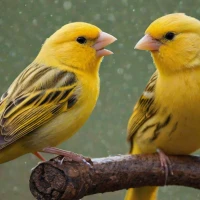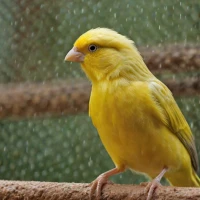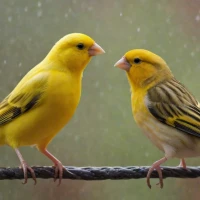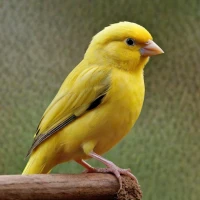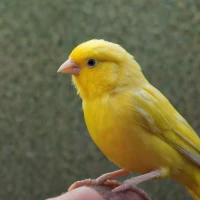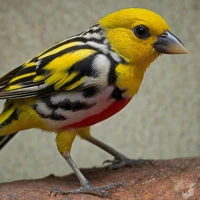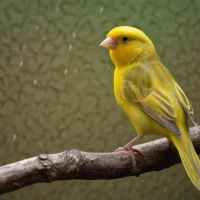The Stafford Canary: A Delightful Companion for Pet Enthusiasts 🐦
I remember the first time I saw a Stafford Canary. It was in the cozy little living room of my friend, Claire. She had this quaint antique birdcage placed near the sunlit window, and inside was the most vibrant, singing little canary, nestled comfortably between the perches. I’d never seen one quite like it before—so lively and charming! Right then and there, I knew I’d have to learn more about this fascinating breed.
What Sets the Stafford Canary Apart?
Stafford Canaries are not your typical canary. These little creatures are a delightful blend of color, song, and personality. They are named after the English city of Stafford, where they were first bred. What makes them stand out is their unique combination of features from their parent breeds – the Gloster Canary and the Red Factor Canaries. The result is a petite, colorful bird with exceptional singing abilities and a friendly demeanor.
A Brief History of the Stafford Canary
These beauties have quite a rich history. Back in the 1980s, breeders aimed to create a canary that combined the stellar singing prowess of the Gloster Canary with the vivid coloration of the Red Factor Canaries. And boy, did they succeed! The Stafford Canary quickly gained popularity for its stunning appearance and melodic songs.
Oh, and here’s a fun fact: Did you know that canaries were once used in coal mines to detect toxic gases? Pretty brave for such tiny creatures, right? 🪶
Physical Traits and Characteristics
Stafford Canaries usually weigh between 12 to 20 grams and measure around 11 to 13 cm in length. Their plumage is nothing short of spectacular, ranging in colors from yellow, red, and white, to combinations of these hues. The males are known for their brighter colors and more robust singing, while the females, though more subdued in coloration, are equally delightful.
Temperament and Behavior
These birds are known for their lively and social nature. They are relatively easy to care for and get along well with other canaries. I’ve heard from multiple bird parents that their Stafford Canaries often greet them with cheerful chirps and seem genuinely happy to see them! 🌼
Housing Your Stafford Canary
Creating the perfect home for your little feathered friend can seem daunting, but it isn’t rocket science. The key is to provide a spacious cage with plenty of perches, toys, and safe materials. Claire once told me she made the mistake of buying a cramped cage initially and had to upgrade almost immediately because her canary seemed so restless. She learned her lesson well – giving your canary enough room to flutter their wings is crucial.
Diet and Nutrition
Stafford Canaries thrive on a balanced diet, mainly consisting of canary seed mix, fresh fruits, and vegetables. It’s essential to provide them with a variety of foods to keep their diet interesting and ensure they get all the necessary nutrients. Interestingly, canaries also like hard-boiled eggs occasionally. Who would’ve thought, right?
Health Considerations
Keeping an eye on your canary’s health is vital. Regular vet check-ups can help catch any potential issues early. Look out for signs such as lethargy, fluffing up, or a decrease in singing as these can indicate health problems. Oh, and did you know canaries can live up to 15 years with proper care? That’s a pretty long time for a small bird!
Breeding Stafford Canaries
Breeding these birds can be an incredibly rewarding experience. However, it does require some know-how. Males and females should be introduced during the breeding season, typically in the spring. Providing them with a comfortable breeding cage and nesting materials can encourage successful mating and egg-laying.
Training and Socializing
Stafford Canaries are quite intelligent and can be trained to some extent. They enjoy interaction and can learn to recognize their owner’s voice. I remember Claire used to spend hours whistling little tunes to her canary, and over time, he would mimic parts of the melody. It was the cutest thing! 🎼
Challenges and How to Overcome Them
Owning a Stafford Canary, or any pet, comes with its set of challenges. For instance, these birds can sometimes be prone to mites and other parasites. Regular cleaning of the cage and providing preventive treatments can help keep these pests at bay. Dealing with a moody canary can also be tricky; sometimes they just want their space, and that’s okay too. Being patient and attentive can work wonders.
Personal Reflection and Conclusion
Overall, my journey with Stafford Canaries has been nothing short of a joyride. Their vibrant personalities, beautiful songs, and the splash of color they bring into a home are second to none. I always say, if you’re looking for a delightful companion that’s easy to care for and endlessly entertaining, the Stafford Canary is a top choice.
Thank you so much for reading! I hope you found this dive into the world of Stafford Canaries as fascinating as I did. 🥰 Fly high, friends! 🌟



